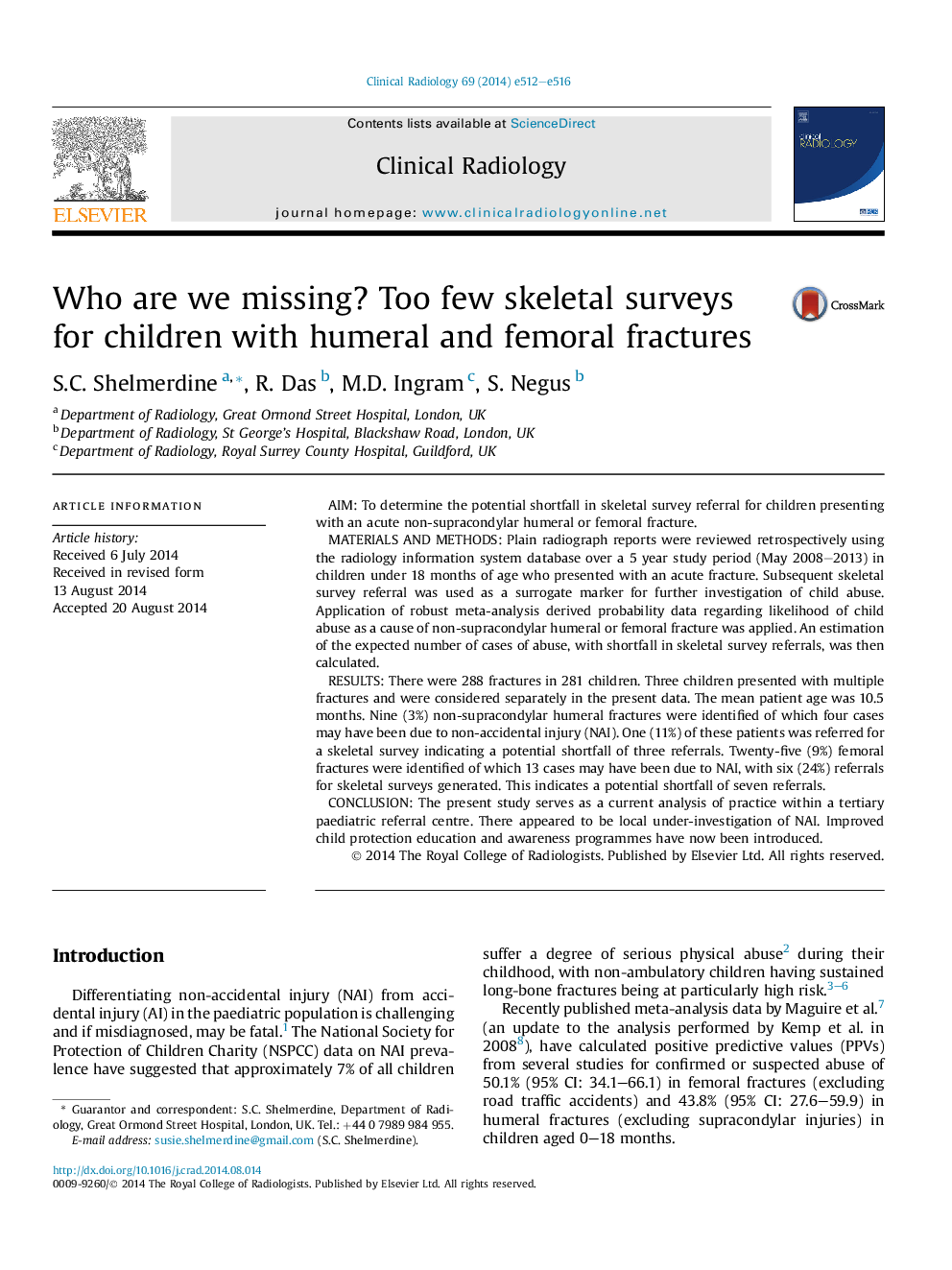| Article ID | Journal | Published Year | Pages | File Type |
|---|---|---|---|---|
| 3981663 | Clinical Radiology | 2014 | 5 Pages |
•Long bone fractures in non-ambulatory children carry high probability for child abuse.•Suspicion for child abuse should trigger a referral for a skeletal survey.•We examine the potential shortfall in skeletal survey referrals in such patients.•Only 11% and 24% of humeral and femoral fractures respectively were referred for skeletal surveys.•Changes to current practice are proposed to highlight and improve child safeguarding issues.
AimTo determine the potential shortfall in skeletal survey referral for children presenting with an acute non-supracondylar humeral or femoral fracture.Materials and methodsPlain radiograph reports were reviewed retrospectively using the radiology information system database over a 5 year study period (May 2008–2013) in children under 18 months of age who presented with an acute fracture. Subsequent skeletal survey referral was used as a surrogate marker for further investigation of child abuse. Application of robust meta-analysis derived probability data regarding likelihood of child abuse as a cause of non-supracondylar humeral or femoral fracture was applied. An estimation of the expected number of cases of abuse, with shortfall in skeletal survey referrals, was then calculated.ResultsThere were 288 fractures in 281 children. Three children presented with multiple fractures and were considered separately in the present data. The mean patient age was 10.5 months. Nine (3%) non-supracondylar humeral fractures were identified of which four cases may have been due to non-accidental injury (NAI). One (11%) of these patients was referred for a skeletal survey indicating a potential shortfall of three referrals. Twenty-five (9%) femoral fractures were identified of which 13 cases may have been due to NAI, with six (24%) referrals for skeletal surveys generated. This indicates a potential shortfall of seven referrals.ConclusionThe present study serves as a current analysis of practice within a tertiary paediatric referral centre. There appeared to be local under-investigation of NAI. Improved child protection education and awareness programmes have now been introduced.
